| Membership | Price (+HST) |
|---|---|
| Single | $85/year |
| Single Plus | $120/year |
| Family | $130/year |
| Family Plus | $175/year |
| Contributing | $300/year |
| Supporting | $600/year |
| Sustaining | $1,000/year |
| Benefactor's Circle | $2,500/year |
| Director's Circle | $5,000/year |
| President's Circle | $10,000/year |
A Celebration of Lilacs
By Alex Henderson, Curator of Collections, Royal Botanical Gardens
Lilacs (scientific name Syringa) are beloved garden plants and much admired for their showy and fragrant blooms in spring. At the current time it is thought that approximately 21 different species of lilac can be found in the wild. The geographic range of the majority of wild species includes eastern Asia particularly Japan, Korea and China with two lilac species native to Europe. Of the European species Syringa josikae inhabits parts of Hungary and Romania whilst Syringa vulgaris is native to the Balkan mountain regions.
Due to the popularity of lilacs, many of the wild species have been hybridized by plant breeders to create new cultivated varieties (cultivars) of this iconic shrub. It is though that approximately 2000 lilac cultivars exist globally of which several hundred can be found in the Katie Osborne Lilac Collection at RBG’s Arboretum. As a result, the collection is one of the world’s most diverse lilac collections. The major subset of lilac cultivars in RBG’s collection are of Syringa vulgaris lineage but the collection also contains a number of hyacinth lilacs, miscellaneous hybrids, Japanese tree lilacs and Syringa × prestoniae cultivars which were specially bred for Canada’s climate by Isabella Preston who was one of Canada’s first female plant breeders.
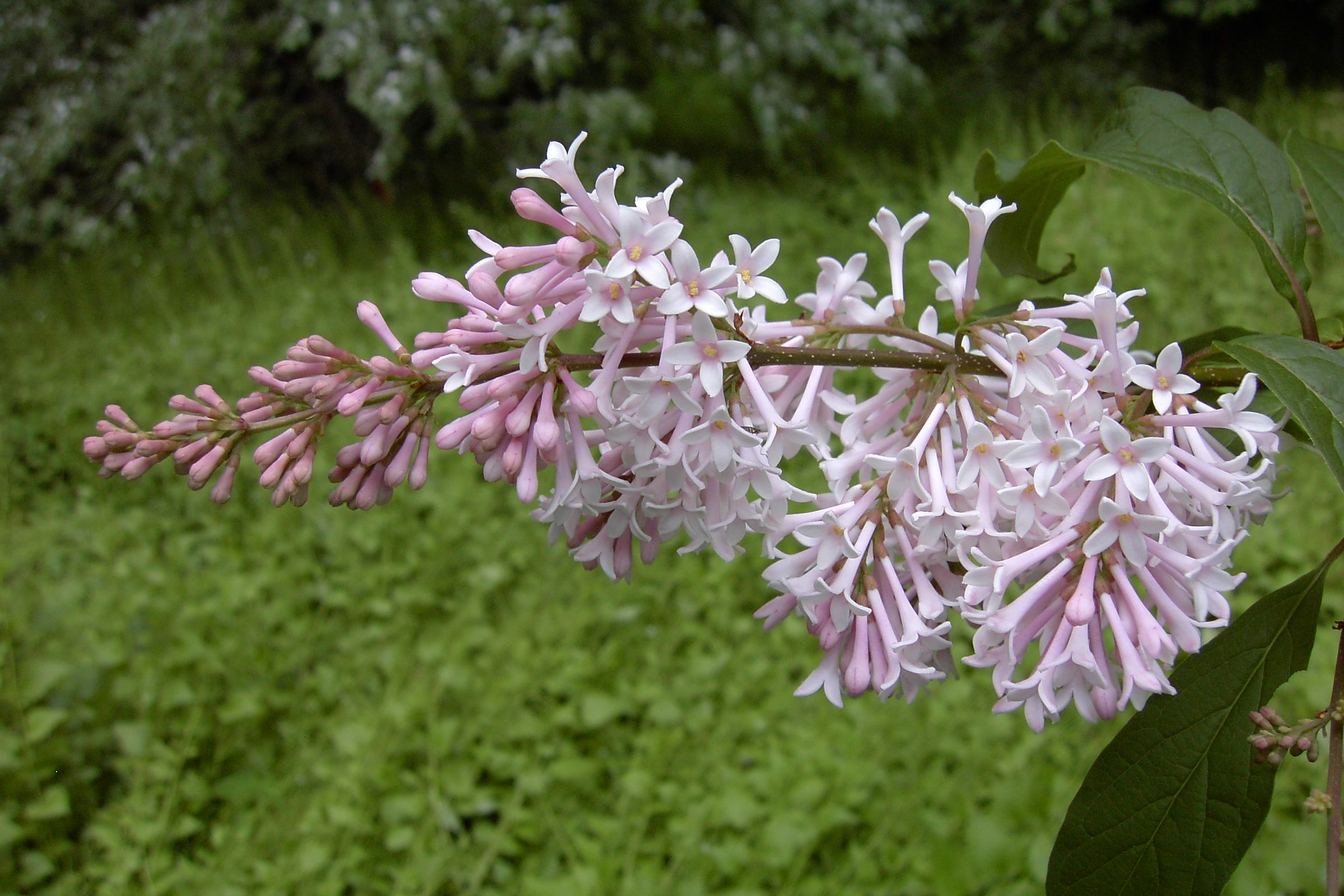
History of Lilacs
Lilacs are not native to north America and first arrived here with European settlement particularly through the influence of the French, Dutch and English. They were ideal plant candidates to survive long sea journeys due to their sturdiness of growth and ability to transplant here and tolerate the winter cold. They were also a fond memory of home when arriving in a strange new land. As early as 1753, John Bartram, an early American botanist noted that lilacs were planted profusely and were numerous. Bartram’s associate Peter Collinson noted that the lilac collection of John Custis in Williamsburg, Virginia was the finest on the continent.
Other historic plantings of lilacs in north America can be found at the Wentworth lilac planting in Portsmouth, New Hampshire and planted around 1750 by Royal Governor Benning Wentworth. The second is at Mackinack Island, Michigan, where French Jesuit missionaries are thought to have planted lilacs at their permanent settlement in the late 1600’s or early 1700’s. So popular had this plant become that in 1767 Thomas Jefferson made notes on planting lilacs as did George Washington in 1785.
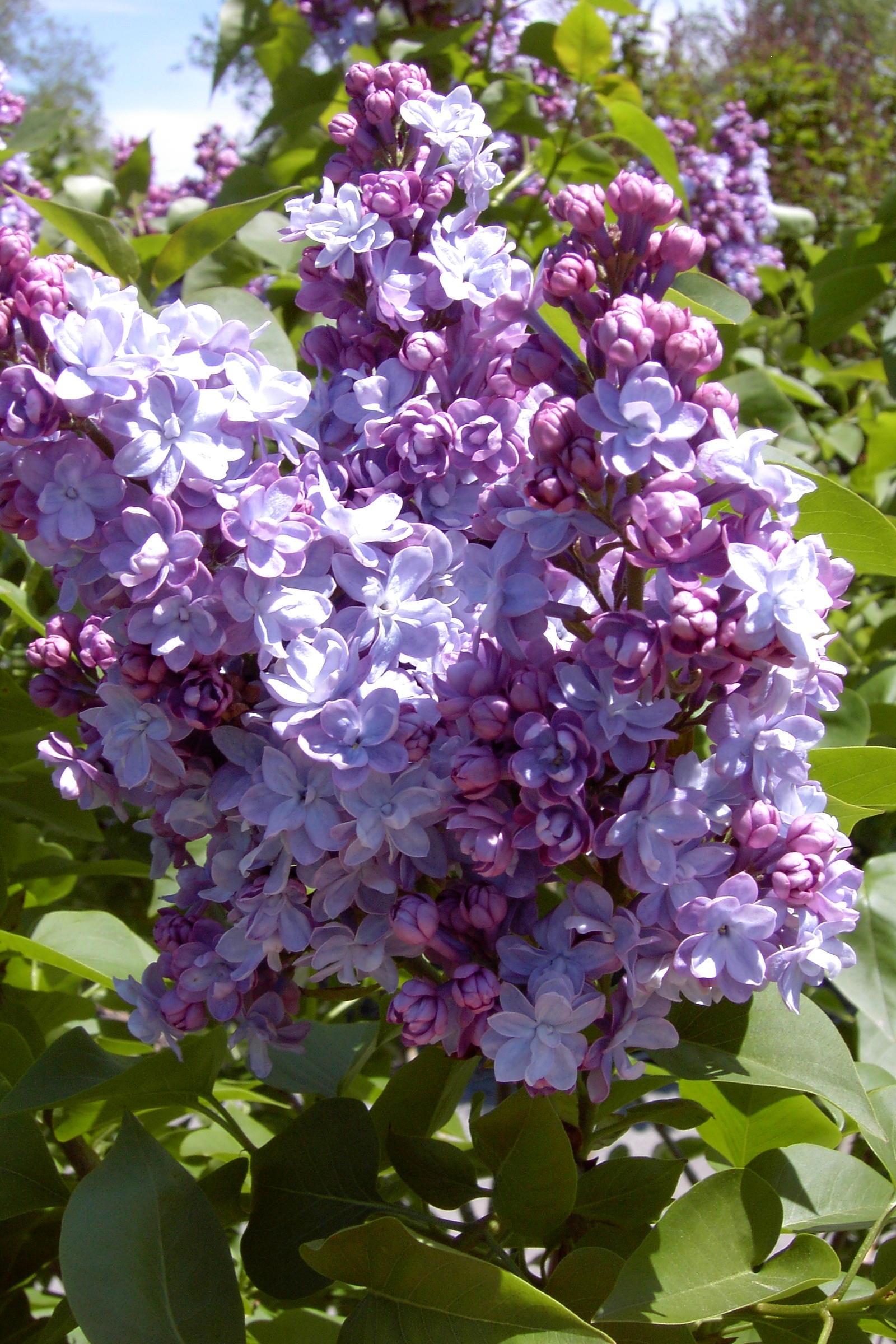
Caring for Lilacs
Botanically lilacs are classed as woody deciduous shrubs and horticulturally are grown for their fragrant blooms in spring. To thrive, lilacs should be planted in well-drained soil in a location that receives full sun for six to eight hours a day. Some cultivars with dark purple flowers will appreciate some shade in preventing flower colours fading. Lilacs appreciate good air circulation as this is beneficial in combatting diseases such as powdery mildew which is non-life threatening but unsightly. Prompt removal of faded flowers (termed thyrses) before seed set is critical as this will increase bloom in the following year. Pruning immediately after flowering should remove dead, diseased and rubbing wood and encourage air flow through the plant. Maintaining lilacs at a height of six to nine feet keeps shrubs manageable and maintains the fragrant flowers at a decent head/nose height.
To renovate an old lilac or one that is in bad shape remove one-third of the oldest wood down to the ground in year one, one third in year two and the remainder in year three. Lilacs may easily be transplanted and moved. The best time to do this is August when the plants are dormant retaining as much of the plants root ball as possible.
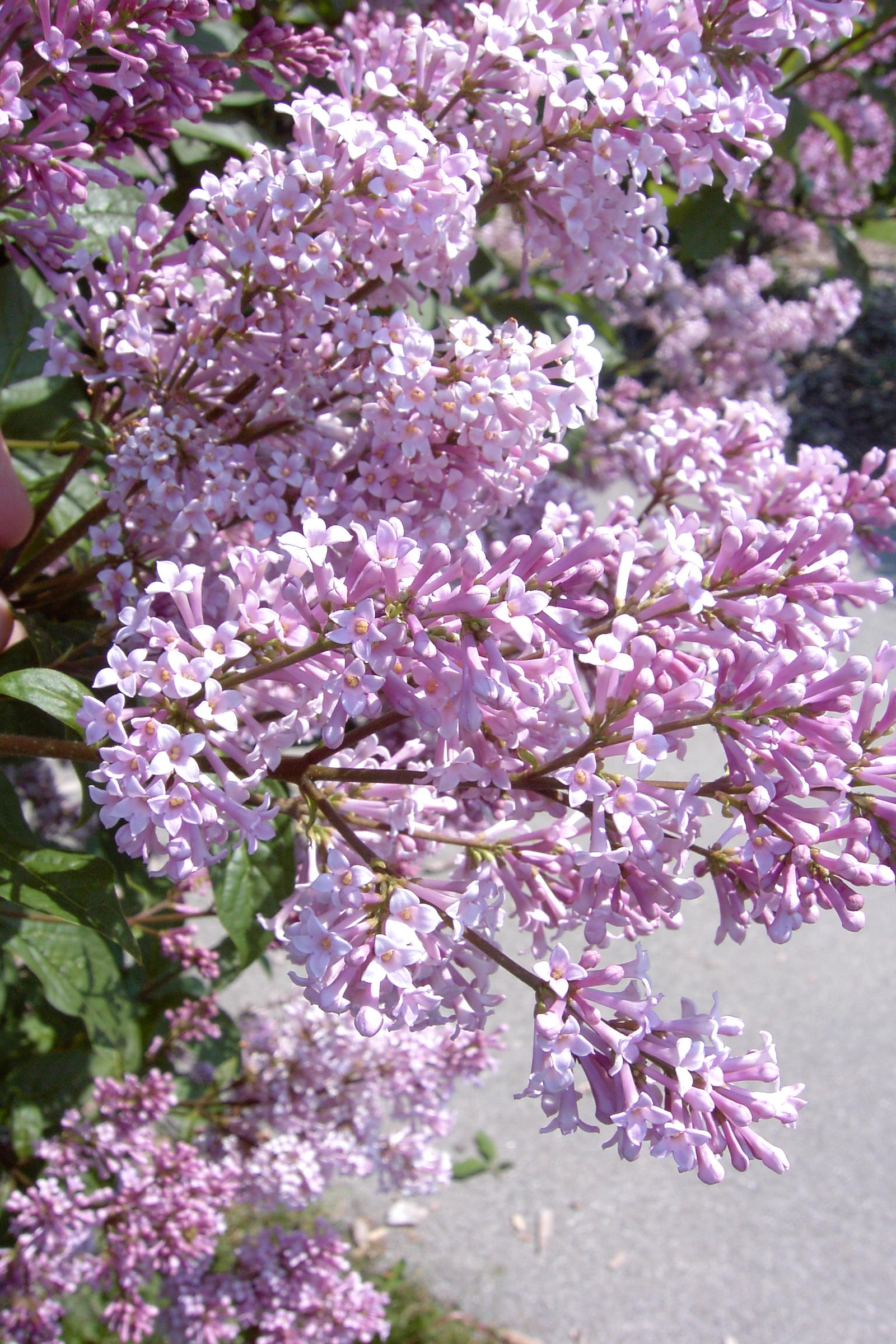
Lilac Varieties and Breeding
Cultivars of common lilac (Syringa vulgaris) are often referred to as single or double flowered French hybrids. This is in reference to the prolific hybridizing work of Victor Lemoine and his sons at their nursery based in the Lorraine province of France. They worked with many different plant genera creating spectacular new cultivars that have lasted the test of horticultural time. Lemoine’s work with lilacs began around 1870 and is of particular importance as he was so prolific in introducing new lilac selections. Common lilac cultivars are classed as mid-bloom season lilacs. All of Lemoine’s common lilac cultivars are crosses between the wild species of Syringa vulgaris and S. vulgaris cultivars.
Not content with single and double French hybrids Lemoine added the species Syringa oblata to his collection and began crossing this plant with Syringa vulgaris. The result was the introduction of the hyacinth lilac (Syringa × hyacinthiflora and cultivars). Manitoba lilac breeder Frank Leith Skinner also contributed to hyacinth lilac breeding. His introduction S. × hyacinthiflora ‘Maiden’s Blush’ has one of the finest fragrances of any lilac. Hyacinth lilacs are classed as early bloom season lilacs.
Preston lilacs (Syringa ×prestoniae and cultivars) are Canada’s contribution to the lilac world. Isabella Preston, (after whom these lilacs are named) crossed the Asian species Syringa villosa and Syringa komarowii subsp. reflexa to create a whole new group of very cold tolerant and late blooming hybrid lilacs. Preston hybrids differ from common and hyacinth lilacs in being much larger shrubs and having noticeably different flowers, leaf shape and fragrance. These lilacs are extremely hardy and were bred intentionally with the Canadian climate in mind. She named many of her cultivars in honour of the women of Shakespearian tales. Preston Hybrids are classed as late bloom season lilacs.
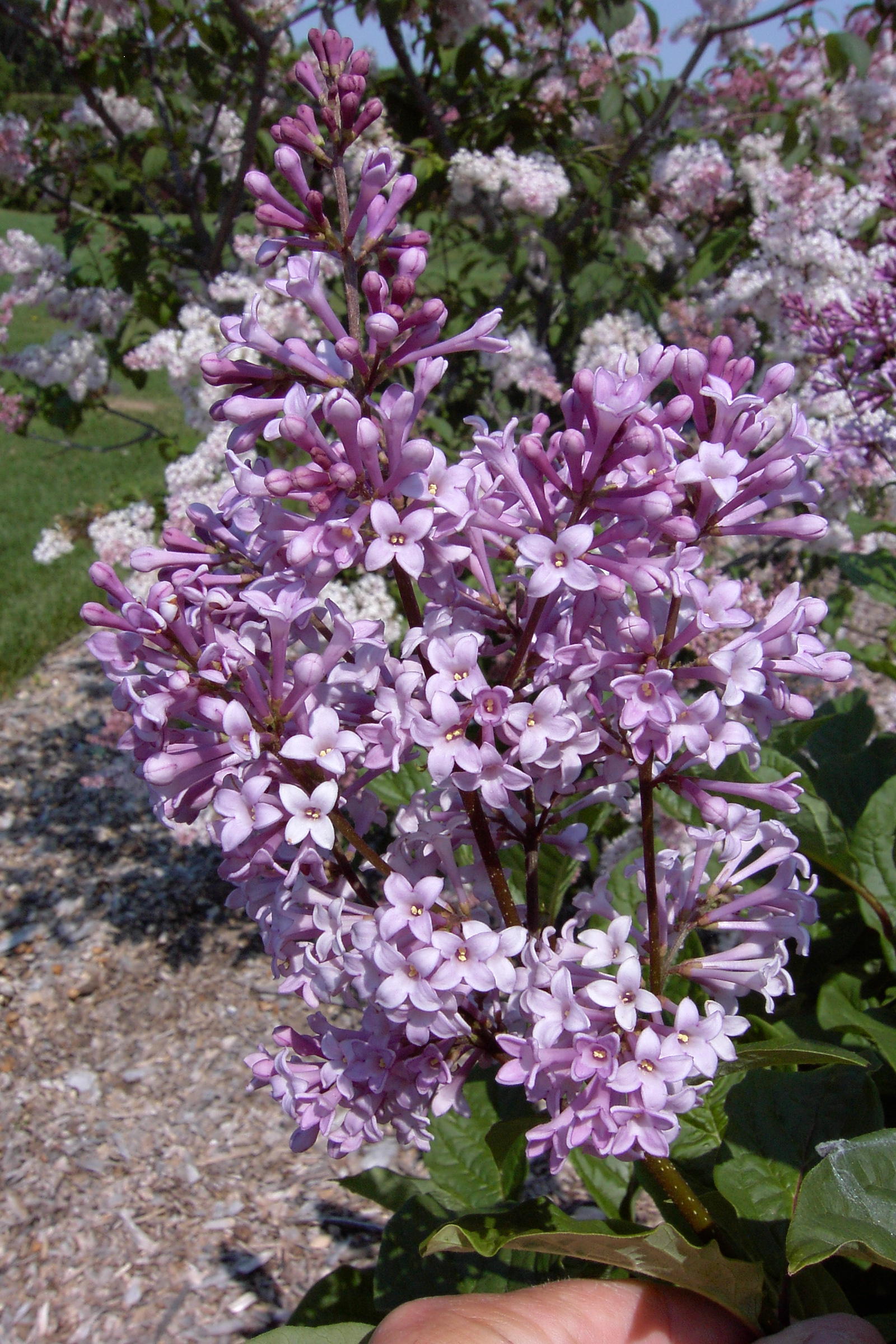
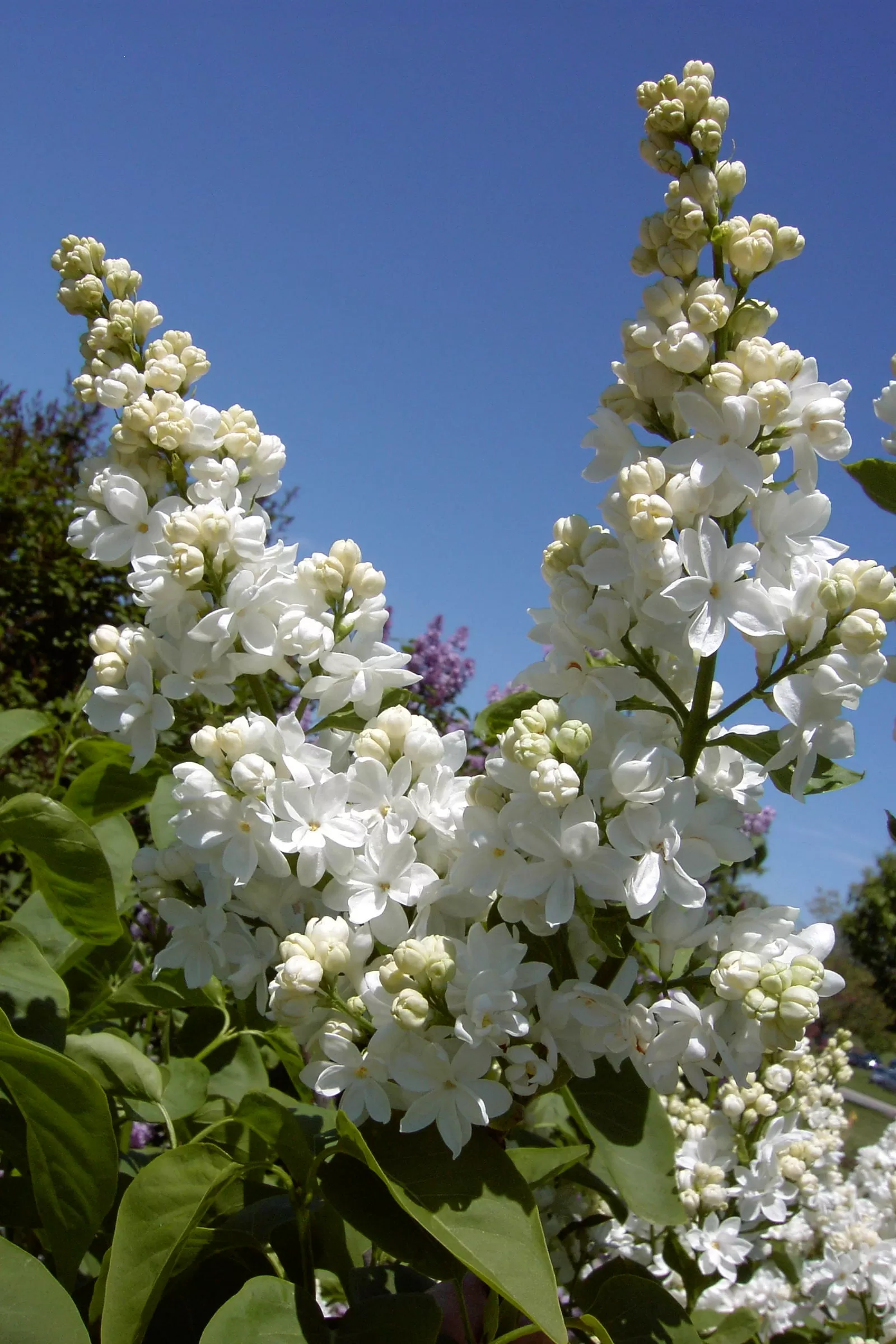
When planting lilacs in your garden, it makes good sense to combine a diversity of common, hyacinth and Preston lilacs. By combining these early, mid and late season plants one can have lilacs in bloom for at least six weeks in spring each year. When planting en masse make sure you include white lilacs at intervals as this will really make the flowers pop!
RBG’s contribution to the world of lilacs is via the introduction of a white double flowered French hybrid called Syringa vulgaris ‘McMaster Centennial’. In 1975, Joan Brown, RBG’s plant breeder made a cross between the lilac cultivars ‘Primrose’ and ‘St Joan’ producing a plant with spectacular double white flowers. This was introduced in 1987 and named to commemorate the centenary year of McMaster University.
Along with scent, the most important ornamental quality of lilacs is colour. Flower colour can be very subjective, and the range of colour makes description difficult. Not all lilacs are lilac! As a result, botanical garden curators, botanists, scientists, horticulturists, and plant hybridizers around the world denote flower colour using a simple colour classification process termed the Wister Code. John Wister was an American horticulturist, and International Lilac Registrar from 1956-1975. He proposed the following logical sequence of colour categories:
- I. White
- II. Violet
- III. Blueish
- IV. Lilac
- V. Pinkish
- VI. Magenta
- VII. Purple
In addition, lilac flowers are classified as being either;
Single – with four petals
Double – with more than four petals
For example, if a lilac is classified as being S III then it is internationally recognized as being a lilac with single blueish flowers. If it is classified as D VII then it would be internationally recognized as a double purple lilac. Thanks to the Wister Code language differences can be overcome in communicating colour.
Although lilacs are known for their intoxicating scent not all lilacs are equally fragrant. Common lilac has a strong but not overpowering scent whilst some of the wild species from the far-east have a spicier fragrance somewhat reminiscent of cloves. The tree lilacs Syringa reticulata and Syringa pekinensis have a more musk like fragrance that is not always agreeable to some people. When planting a lilac garden consider planting cultivars of common lilac with some of the spicier smelling wild cousins to appreciate the diversity of fragrance. Character of scent may also change somewhat from season to season based on changes in annual climate. A cool spring and summer may yield different fragrance levels compared to a hot spring and summer. As with wine which may have vintage years in taste, the same can be said of lilacs with fragrance. Some years are just better than others!
More about Lilacs at RBG
More from the RBG Blog
Check out RBG’s blog for announcements, articles, and more from Canada’s largest botanical garden.
Want to be sure you hear first? Sign up for our weekly e-newsletter to hear about upcoming events, weekend activities, articles, and more!












